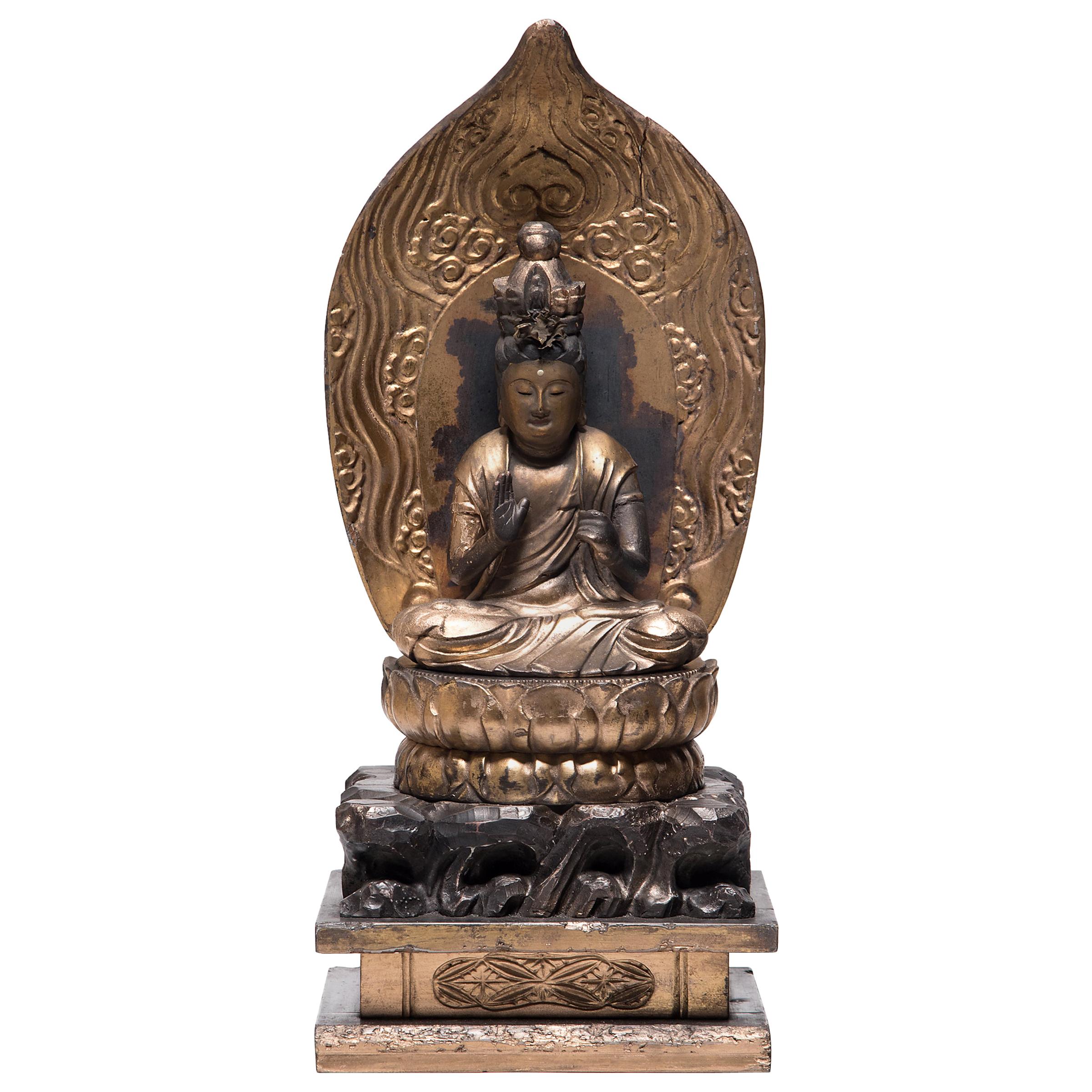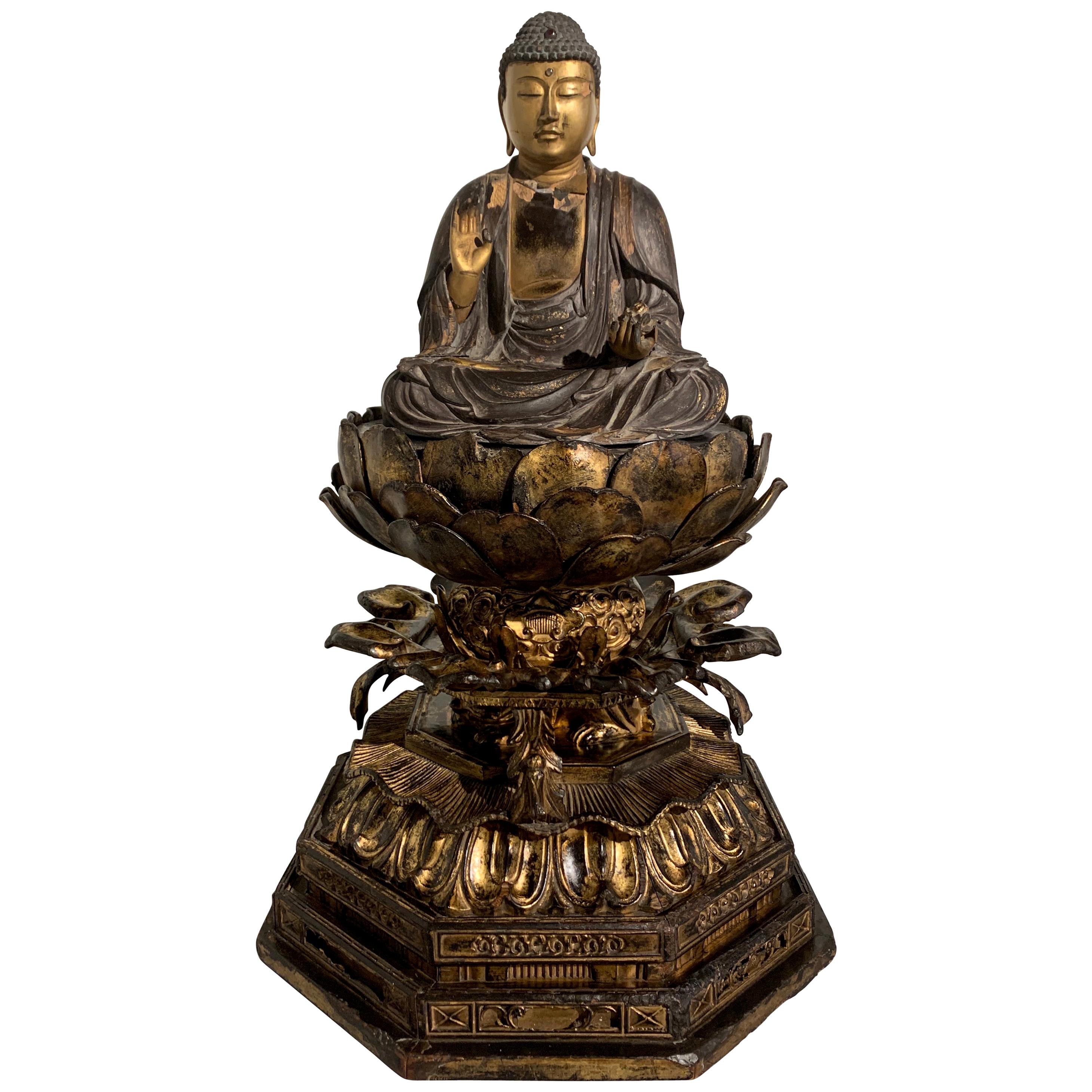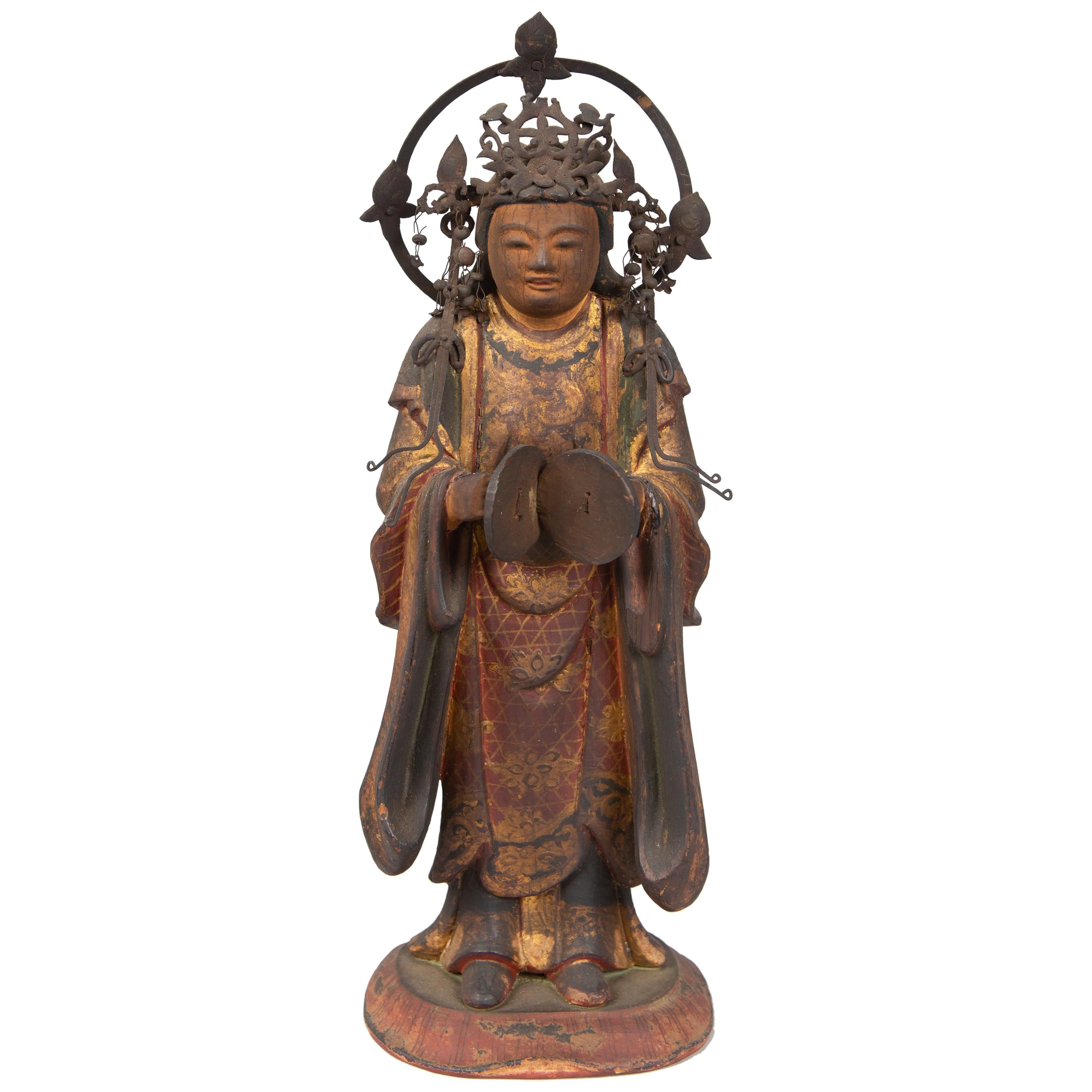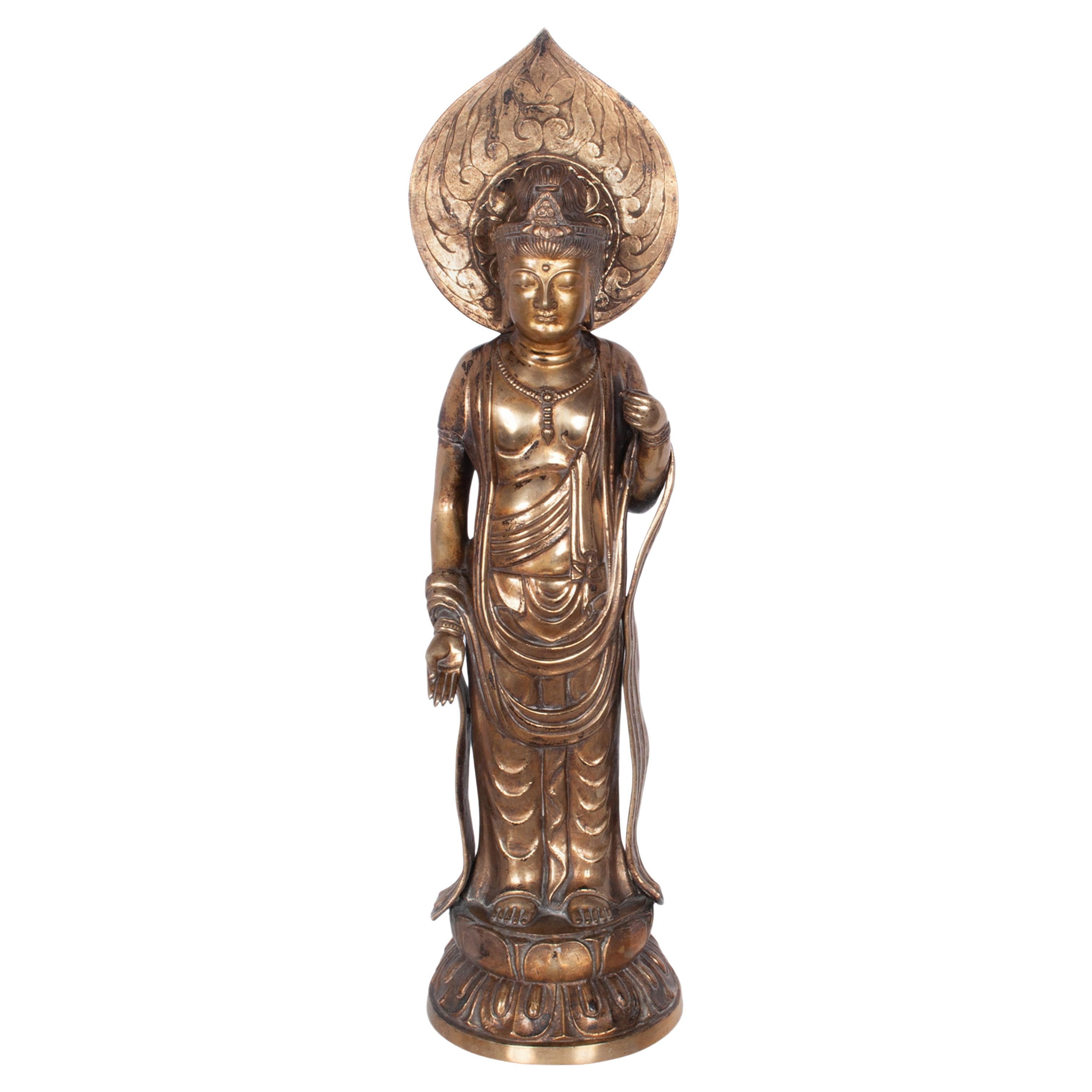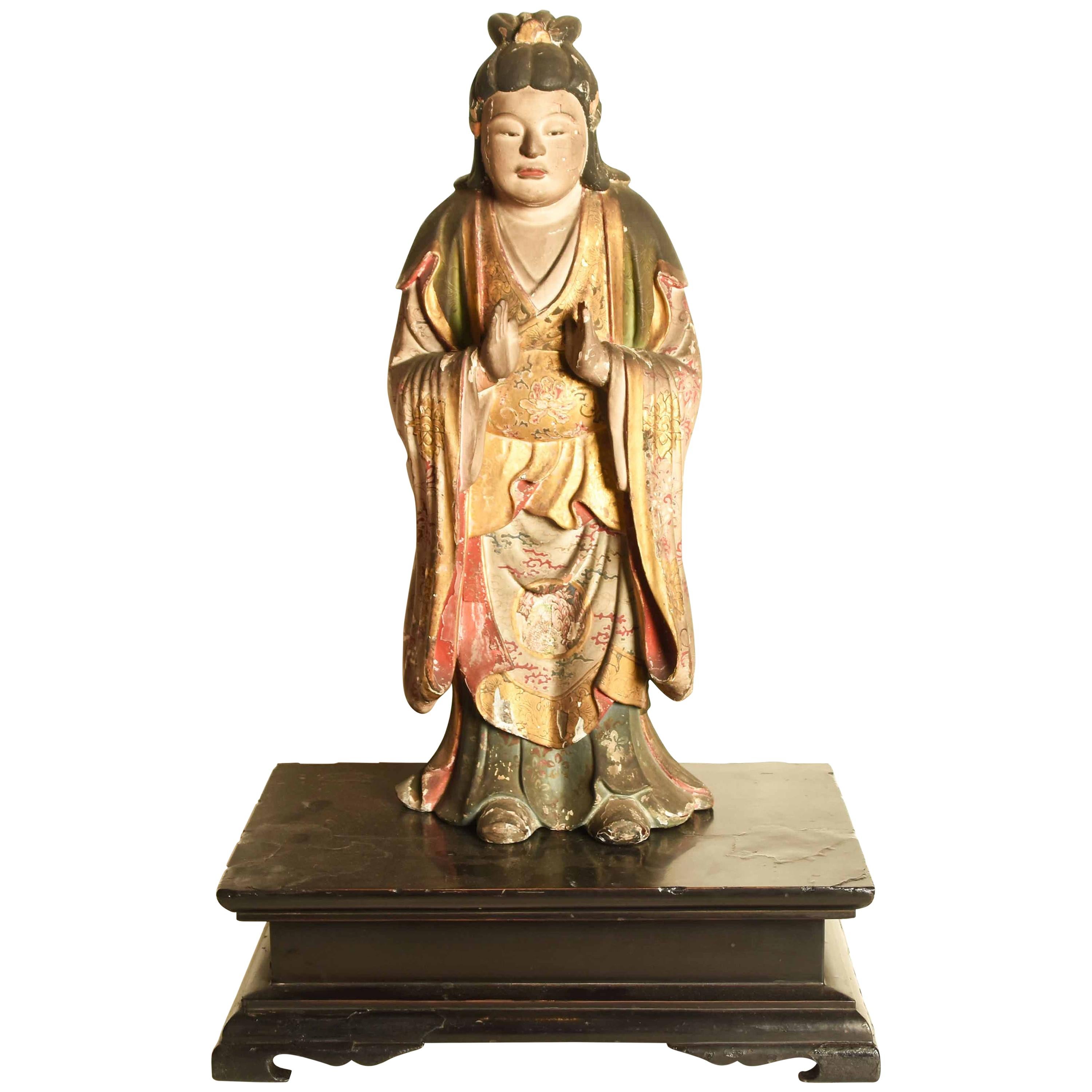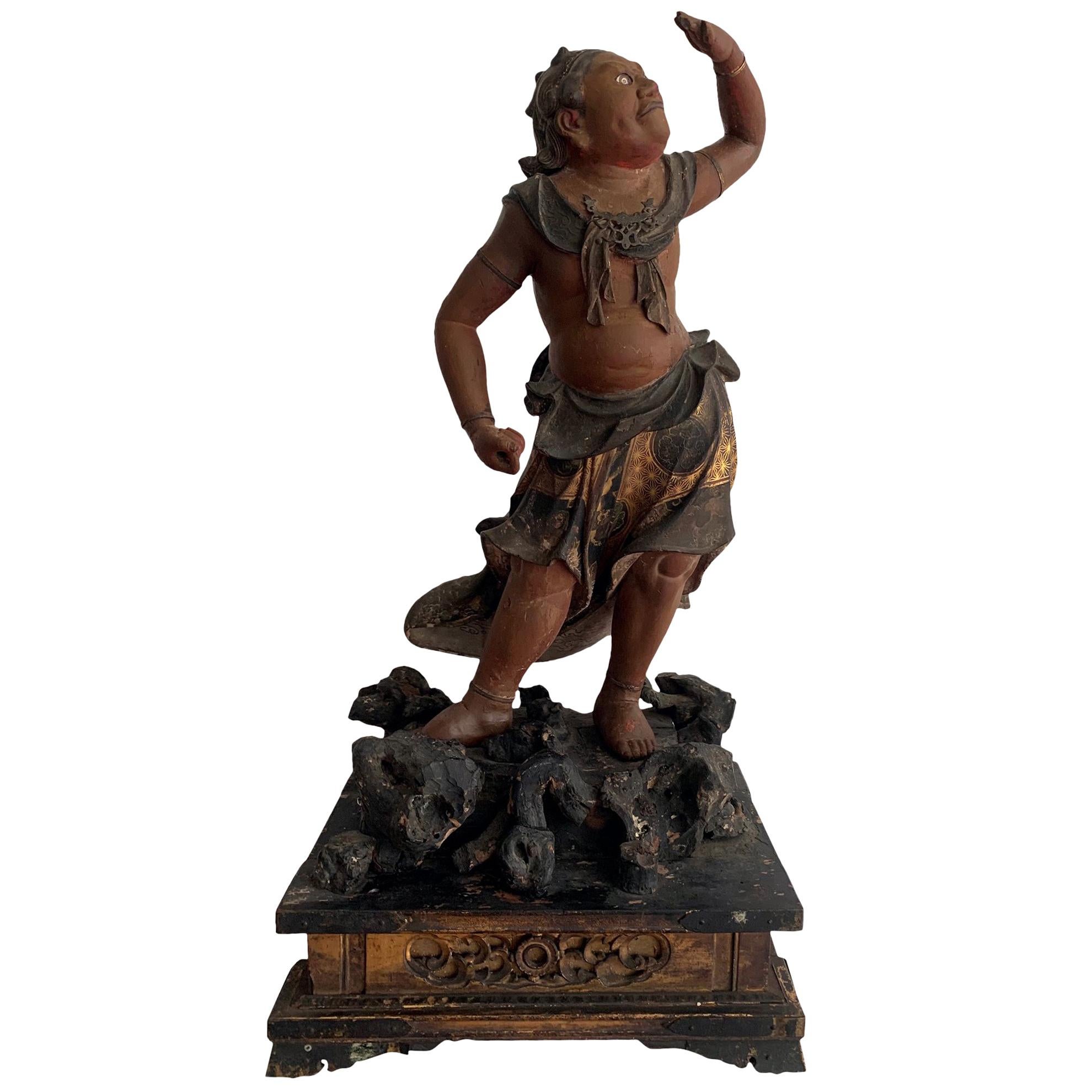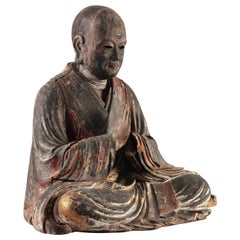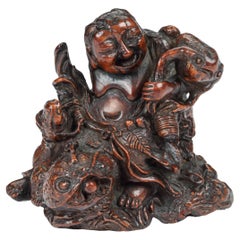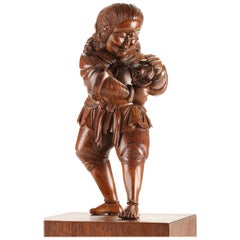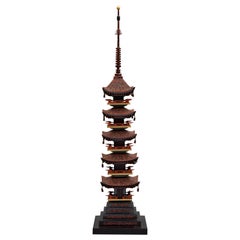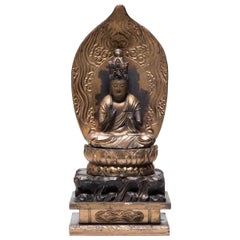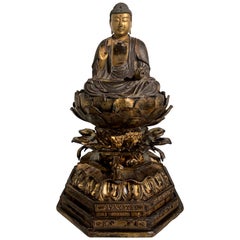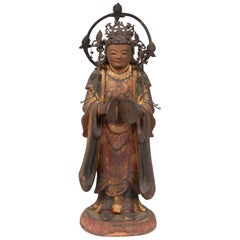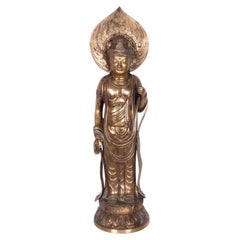Items Similar to A superb Japanese giltwood sculpture of Kannon Bosatzu
Want more images or videos?
Request additional images or videos from the seller
1 of 7
A superb Japanese giltwood sculpture of Kannon Bosatzu
$41,971.26
£31,222.38
€35,000
CA$57,473.01
A$63,902.17
CHF 33,366.19
MX$777,845
NOK 425,738.01
SEK 398,896.18
DKK 266,435.67
Shipping
Retrieving quote...The 1stDibs Promise:
Authenticity Guarantee,
Money-Back Guarantee,
24-Hour Cancellation
About the Item
A Japanese giltwood sculpture of Kannon Bosatzu
Japan, Edo period, Early 19th century
H. 50 X W. 58.3 cm
Provenance:
- The Somerwil Collection of Japanese Art
- Aalderink Oriental Art, Amsterdam
- Dimensions:Height: 19.69 in (50 cm)Width: 14.77 in (37.5 cm)Depth: 12.92 in (32.8 cm)
- Style:Edo (Of the Period)
- Materials and Techniques:
- Place of Origin:
- Period:
- Date of Manufacture:Edo-period
- Condition:Wear consistent with age and use.
- Seller Location:Amsterdam, NL
- Reference Number:1stDibs: LU5458235660792
About the Seller
5.0
Recognized Seller
These prestigious sellers are industry leaders and represent the highest echelon for item quality and design.
Established in 1985
1stDibs seller since 2020
23 sales on 1stDibs
Typical response time: 2 hours
- ShippingRetrieving quote...Shipping from: Amsterdam, Netherlands
- Return Policy
Authenticity Guarantee
In the unlikely event there’s an issue with an item’s authenticity, contact us within 1 year for a full refund. DetailsMoney-Back Guarantee
If your item is not as described, is damaged in transit, or does not arrive, contact us within 7 days for a full refund. Details24-Hour Cancellation
You have a 24-hour grace period in which to reconsider your purchase, with no questions asked.Vetted Professional Sellers
Our world-class sellers must adhere to strict standards for service and quality, maintaining the integrity of our listings.Price-Match Guarantee
If you find that a seller listed the same item for a lower price elsewhere, we’ll match it.Trusted Global Delivery
Our best-in-class carrier network provides specialized shipping options worldwide, including custom delivery.More From This Seller
View AllJapanese Kamakura/Muromachi Period Cedarwood Buddhist Priest, 12th-15th Century
Located in Amsterdam, NL
Seated Buddhist priest
Japan, Kamakura period (1185-1333) or Muromachi period (1333-1573).
Different carved hollow blocks of cedar wood joined togeth...
Category
Antique 15th Century and Earlier Japanese Sculptures and Carvings
Materials
Cedar
A Japanese rootwood sculpture of Gama Sennin
Located in Amsterdam, NL
Edo period, 18th century
H. 11 x W. 15 cm
Sennin’s are ascetics living as hermits in the mountains, ascribed with magic powers. This Sennin is sitting between rocks on a huge grim-...
Category
Antique 18th Century Japanese Sculptures and Carvings
Materials
Wood
Japanese Sculpture Okimono of a Dutchman, Dutch Colonial, 18th Century
Located in Amsterdam, NL
An extremely rare wood Japanese Okimono of a Dutchman playing with a bat
Edo period, 18th-19th century or earlier
The Dutchman is standing and h...
Category
Antique Early 18th Century Japanese Edo Sculptures and Carvings
Materials
Boxwood
Fabulous Lacquer Pagoda Chinoiserie Sculpture with Original Wooden Box
Located in Amsterdam, NL
Wajima lacquer model of a five story-pagoda by the contemporary lacquer master Miyasaki Masahiro.
In the original signed box, including a wooden disp...
Category
Late 20th Century Japanese Showa Lacquer
Materials
Lacquer
Important Japanese six-fold screen depicting The Tale of The Genji, 17th century
Located in Amsterdam, NL
An important Japanese six-fold screen, depicting episodes from The Tale of The Genji
Edo period, 17th century
Ink and colour on gilded paper, H. 155 x W. 380 cm
The Tale of Genji...
Category
Antique 17th Century Japanese Edo Paintings and Screens
Materials
Paint, Paper
Rare Charming 17th Century Japanese Lacquer Cabinet with Gilt-Bronze Mounts
Located in Amsterdam, NL
A fine Japanese pictoral style lacquer cabinet with gilt-metal mounts
Kyoto, Edo period, 1670-1690
Decorated in Japanese relief lacquer work, black lacquer ground decorated...
Category
Antique Late 17th Century Japanese Furniture
Materials
Bronze
$44,969 Sale Price
25% Off
Free Shipping
You May Also Like
Japanese Gilt Seated Kannon Figure, circa 1850
Located in Chicago, IL
Intricately carved and finished with gilt black lacquer, this seated figure depicts the bodhisattva Guanyin, known in Japanese Buddhism as Kannon. Described as the "Buddha of Infinite Compassion," Kannon is the embodiment of mercy and makes himself available to all who call upon him with all their mind.
Kannon is depicted here seated in diamond position upon a double lotus plinth, set above a stepped base. He is dressed in gracefully draped robes and wears a tall crown bearing a minuscule figure of Amida, the Buddha of Infinite Light. He has a serene expression of calm and holds his right hand in the abhaya mudra, a gesture of comfort, blessing, and protection. Backed by a magnificent leaf-form nimbus, this Kannon figure...
Category
Antique Mid-19th Century Japanese Edo Sculptures and Carvings
Materials
Wood, Lacquer
Japanese Giltwood Medicine Buddha, Yakushi Nyorai, Muromachi Period 16th Century
Located in Austin, TX
A striking Japanese late Muromachi Period (1333-1573) lacquered and giltwood figure of Yakushi Nyorai, the Medicine Buddha, seated upon an elaborate car...
Category
Antique 16th Century Japanese Edo Sculptures and Carvings
Materials
Rock Crystal
16th Century Japanese Sculpture of a Buddhist Tenbu
Located in Hudson, NY
16th century Japanese sculpture of a Buddhist Tenbu, Late Momoyama period (1333-1598) sculpture dated "Bunroku 3", or 1594, in ink on the back. T...
Category
Antique 16th Century Japanese Sculptures and Carvings
Materials
Metal, Gold Leaf
Antique 18th Century Japanese Edo Gilt Bronze Kannon Buddha Statue Figure 1750
Located in Portland, OR
A fine & rare large antique 18th century Japanese Edo period gilt bronze Kannon statue, circa 1750.
This finely cast gilded bronze statue represents the Japanese Bodhisattva of Merc...
Category
Antique 18th Century Japanese Edo Sculptures and Carvings
Materials
Bronze
Superb Example Antique Japanese Gilded Statue of a Shinto God, Momoyama Period
Located in Prahran, Victoria
A Japanese statue of a Shinto god from the Momoyama period. Hand carved from wood with a layer of gesso and hand painted flowing robes with delicately wroug...
Category
Antique 16th Century Japanese Sculptures and Carvings
Materials
Gesso, Wood
Japanese Lacquered and Gilt Wood Buddhism Statue from Edo Period
Located in Atlanta, GA
An exceptional and wood statue of Buddhism Guardian Seitaka Doji from Japan circa Edo period (1603-1868), likely the earlier part of 17th century. One of two chief attendants of Fudou Myouou (the other being Kongara Doji), the name of Seitaka Doji is a transliteration of Sanskrit "Cetaka", meaning servant, slave, and he is said to personify expedient action. He is most commonly found on the right side of Fudou, together with Kongara Doji on the left, forming the Immovable triad, Fudou Sanzon, the terror of evil doers. Seitaka largely adheres to the iconography of a wrathful youth with fleshy body and face, skin in the color of a red lotus, has his hair tied in five knots, and holds a vajra in his left hand and a vajra-club in his right hand, but the actual artistic representations of him in Japan do...
Category
Antique 17th Century Japanese Japonisme Sculptures and Carvings
Materials
Metal
More Ways To Browse
Oriental Sculpture
Japanese Kannon
Japanese Wood Temple
19th Century Wooden Statue
Boxwood Art
Antique White Jade
Japanese Carved Flower
Stone Lotus
Dog Carving
Large Buddha Hand
Chinese Wooden Carvings
Temple Door
Antique Indian Sculpture
Burmese Lacquer Furniture
Burmese Lacquer
Large Asian Carved Wood Sculptures
Japanese Birds Sculpture
Japanese Stone Sculpture
